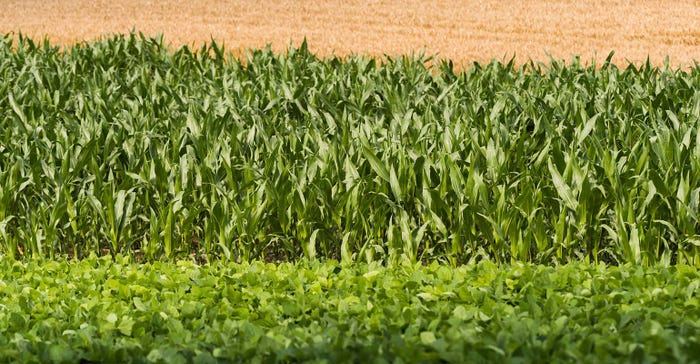
Corn, soybeans and spring wheat all posted lower condition ratings, as expected, in USDA’s latest weekly report as hot, dry weather in many areas continued to weigh on crops.
Corn dropped a point to 64% good/excellent as many of the key production states had lower ratings including the three I-states, Nebraska and North Dakota. The few improvements were noted in Missouri and Ohio, USDA said in its weekly progress report.
Soybeans dipped a point to 61% good/excellent with small declines noted in Iowa and Indiana plus a few others. Improvement was noted in Illinois and Missouri.
“Monday’s crop ratings continue to show adverse weather steadily sapping yield potential, making rains over the next week very important, especially to corn yields,” said Bryce Knorr, Farm Futures senior grain analyst.
Spring wheat declined for the seventh straight week, the latest being a one-point drop to 34% good to excellent as slippage in Idaho, Minnesota and the Dakotas more than offset some improvement in Montana and Washington.
Winter wheat was 75% harvested to lead the five-year average by two points. The Kansas harvest was at 98% versus the 96% average.
Hot, dry weather affected Iowa’s corn. Illinois and Indiana corn declined despite those states receiving rain. However, Indiana said the storms that brought the rain also had strong wind that damaged property. Eastern Nebraska had beneficial rain while very little fell in the western half, the state said.
“Our models based on corn ratings slipped 1.3 bushels per acre, with the average at 167.25 bpa, in a range from 166.2 to 168.3. Yields based on Vegetation Health Indexes for corn remain significantly lower, staying in the 155 to 164 bpa range,” said Knorr. “If ratings don’t improve in the next few weeks it increases potential for yields to disappoint in USDA’s first survey of farmers and their fields, due to come out Aug. 10.”
South Dakota was again hard hit by hot, dry weather, losing nearly 10 bpa of yield potential. Iowa slipped almost 5 bpa, though overall yield potential is still good, said Knorr.
Soybean yield potential did not fall as much, even with the drop in ratings. Knorr said his models put the average yield unchanged at 47.9 bpa, while the national ranking slipped about .1 bpa.
“The Vegetation Health Index maps for soybeans also suggested greater yield loss, down to 46.7 to 47.6 bpa,” he said.
Spring wheat continues to lose ground due to hot, dry conditions in the northern Plains. Knorr calculates the latest readings indicate a .8 bushel drop in yield.
“That takes the average yield down to 36.9 bpa, in a range from 36.5 to 37.3 bpa. USDA forecast the yield at 40.3 bpa, suggesting the total all-wheat crop is down to 1.731 billion bushels, with spring wheat 27 million bushels less,” he said.
In other tallies, USDA had corn silking at 40% versus the 47% average and soybeans setting pods reached 16% versus the 13% average. Iowa corn was silking was at 37% versus the 45% average, Illinois was at 63% versus the 68% average and Nebraska was at 47% versus the 48% average.
Nationally, sorghum was 31% headed versus the 33% average. The crop was rated 63% good/excellent, unchanged from a week ago.
About the Author(s)
You May Also Like




